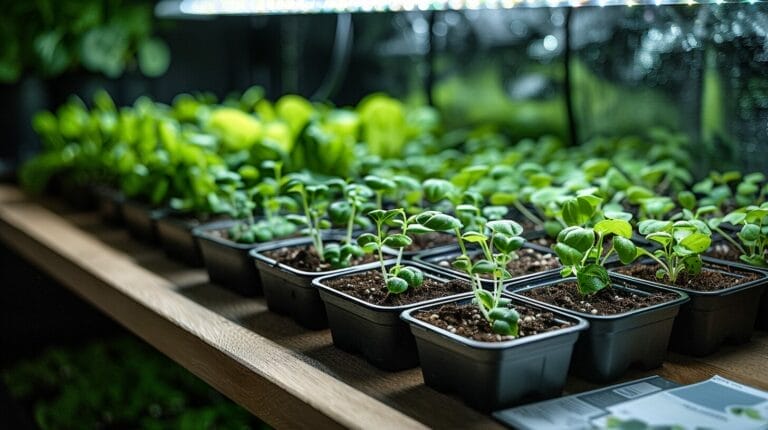How to Dispose of Fluorescent Light Tubes: A Complete Guide
Properly disposing of fluorescent light tubes is essential as they contain mercury, which can be harmful to both human health and the environment if handled incorrectly. We must handle them with care and make sure they are recycled through designated programs to prevent contamination.
Always remember to wear protective gear to avoid direct contact, and collaborate with universal waste handlers to guarantee eco-friendly disposal. In our How to Dispose of Fluorescent Light Tubes guide we will learn the crucial steps to safeguard our well-being and surroundings.
Key Takeaways
- Handle tubes by ends to prevent breakage.
- Wear gloves and goggles for safety.
- Place tubes in lined container to avoid leakage.
- Ventilate and clean up broken tubes carefully.
- Follow guidelines for safe disposal and minimize risks.
Understanding the Importance of Properly Disposing of Fluorescent Tubes

Understanding the importance of correct fluorescent tube disposal is vital because of the significant environmental, health, and legal implications associated with improper handling and disposal, especially since these bulbs emit mercury. When these tubes aren’t correctly disposed of, the mercury within them can leak out, posing severe health risks and causing environmental contamination.
Improper handling of fluorescent tubes can lead to legal consequences. By ensuring the safe disposal of these tubes through designated recycling programs, we can mitigate the release of mercury, protect our health and environment, and comply with legal requirements. Therefore, raising awareness about proper disposal methods for fluorescent tubes, including CFL bulbs, is crucial to managing household hazardous waste.
Identifying Different Types of Fluorescent Lamps and Their Disposal Needs

Understanding the different types of fluorescent lamps, including CFL and incandescent light bulbs, and their specific disposal requirements is essential for safe handling and environmental protection. Here is a breakdown of some common types of fluorescent lamps and their disposal needs:
| Type of Fluorescent Lamp | Disposal Process | Hazardous Waste? |
|---|---|---|
| Compact Fluorescent Lamps (CFLs) | Can be recycled at designated collection sites | Yes, ensure any mercury-containing bulbs are disposed of or recycled according to local regulations. |
| Linear Fluorescent Bulbs | Require special handling due to mercury content | Yes |
| High-Intensity Discharge (HID) and other Mercury-Containing Bulbs | Considered hazardous waste | Yes |
Remember, all fluorescent lamps, especially those containing mercury, should be handled with care to prevent environmental contamination. Always check with local regulations on the disposal of types of hazardous waste and consider using low-mercury or LED alternatives to reduce environmental impact.
Step-by-Step Guide on How to Safely Handle and Dispose of Fluorescent Tubes

To guarantee safe handling and proper disposal of fluorescent tubes, it’s essential to follow specific guidelines and precautions. When dealing with these tubes, it’s important to be mindful of the mercury vapor they contain and the risks associated with breakage, especially with bulbs not classified as low mercury tubes.
Here is a step-by-step guide on how to safely handle and dispose of fluorescent tubes:
- Handle with Care: Always carry fluorescent tubes by their ends to prevent breakage.
- Use Protective Gear: Wear gloves and safety goggles when handling fluorescent tubes to avoid direct contact with skin and eyes.
- Proper Packaging: Place used fluorescent tubes in a sturdy container or box lined with plastic to prevent leakage in case of breakage.
- Clean-Up Protocol: If a fluorescent tube breaks, ventilate the area, avoid direct contact with the mercury vapor, and carefully clean up the debris using gloves and a damp paper towel.
How to Recycle Fluorescent Tubes: Working with Universal Waste Handlers

To ensure the correct disposal of fluorescent tubes, it’s advisable to collaborate with universal waste handlers who specialize in the recycling or disposing of this type of waste. These professionals are equipped to handle hazardous waste like fluorescent tubes in an eco-friendly manner.
To start, find a reliable waste handler in your area that complies with all regulations and has a track record of environmentally sound practices. Once you’ve identified a suitable partner, you can confidently dispose of your fluorescent tubes, knowing they’ll be recycled in a way that minimizes harm to the environment.
During the recycling process, the fluorescent tubes are carefully handled to extract any reusable materials while ensuring that hazardous waste is properly contained and disposed of. This meticulous approach promotes sustainability and is a proactive step towards reducing the impact of fluorescent tubes on our planet.
What Are the Differences in Disposal Methods for Fluorescent Light Tubes and Incandescent Light Bulbs?
When disposing of old fluorescent light tubes, it’s important to recycle incandescent light bulbs properly. Unlike incandescent bulbs, which can be thrown in the regular trash, fluorescent tubes contain small amounts of mercury and must be recycled. Many hardware stores and recycling centers offer drop-off sites for safe disposal.
Alternatives to Fluorescent Lighting: Reducing Hazardous Waste from the Source

Exploring energy-efficient alternatives like LED lighting, which uses a diode rather than a glass tube, can help reduce hazardous waste. LED lights offer several benefits compared to traditional incandescent bulbs and CFLs:
- LED lights contain no mercury, unlike CFLs, reducing the risk of toxic contamination.
- LED bulbs have a longer lifespan, resulting in fewer replacements and less waste generated.
- Energy-efficient LED lighting consumes less electricity, lowering overall energy consumption and reducing environmental impact.
- Despite the initial higher purchase price, the long-term cost savings of LEDs make them a sustainable and economical choice for eco-conscious consumers.
Conclusion
Remember, properly disposing of fluorescent light tubes is essential for the environment and our health. By following the steps outlined in this guide, you can ensure the cleanup and recycling or disposing of fluorescent tubes is done correctly. safely handle and recycle Recycle these tubes to prevent hazardous waste, aligning with EPA guidelines.
Consider switching to alternative lighting options to reduce the amount of harmful materials in your home or workplace and ensure bulbs in your regular waste are minimized. Let’s all do our part to protect the planet and future generations.
Frequently Asked Questions
What are fluorescent light tubes?
Fluorescent light tubes are energy-efficient bulbs that contain mercury and phosphor coating, emitting light when an electric current passes through them.
Why is proper disposal of fluorescent light tubes important?
Proper disposal of fluorescent light tubes is crucial because they contain mercury, a toxic substance that can harm the environment if not handled correctly.
How do I know if my fluorescent bulb contains mercury?
Most fluorescent bulbs, including CFLs (compact fluorescent lamps), contain mercury. Check the label or packaging for information on mercury content.
Can fluorescent bulbs be thrown in the regular trash?
No, fluorescent bulbs should not be thrown in the regular trash because they contain mercury. They should be disposed of properly to prevent environmental contamination.
How should I dispose of fluorescent light tubes?
Fluorescent light tubes should be taken to a local recycling center or hazardous waste collection site for proper disposal. Do not discard them in the regular trash.







